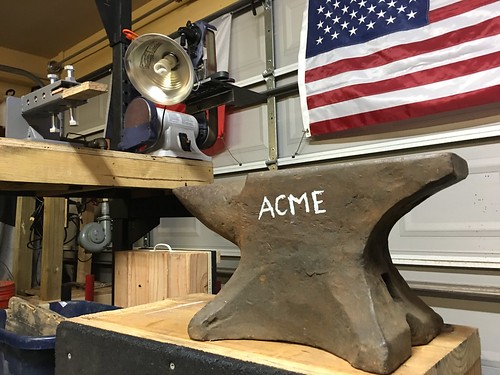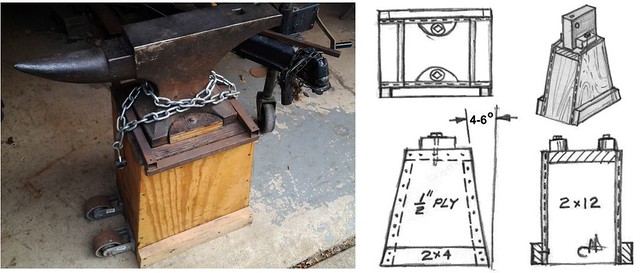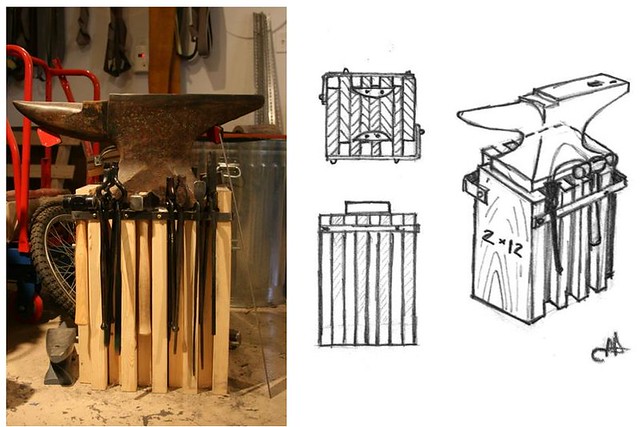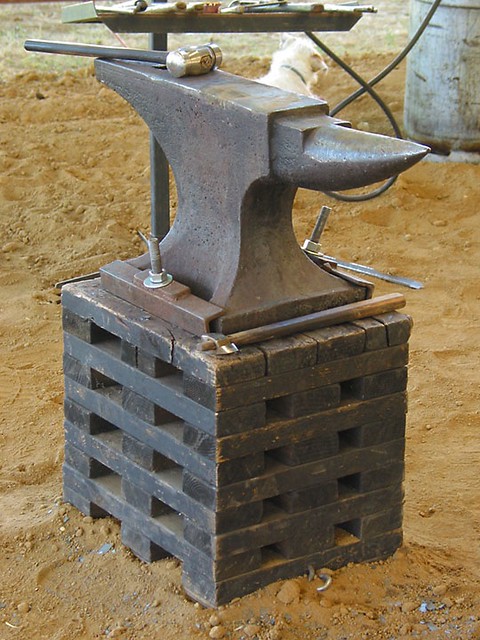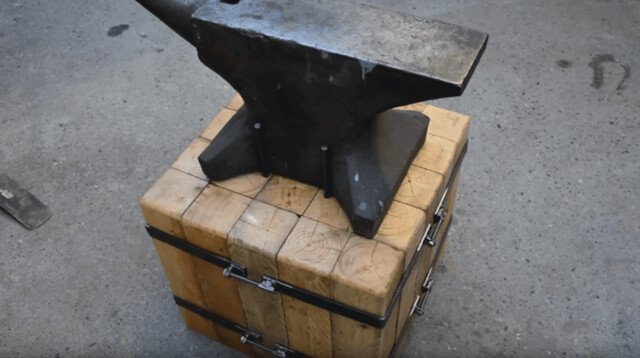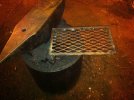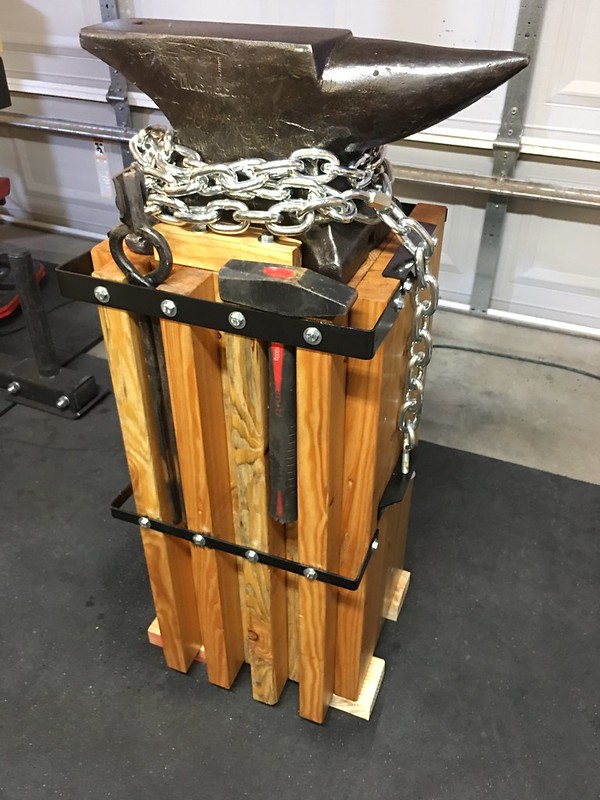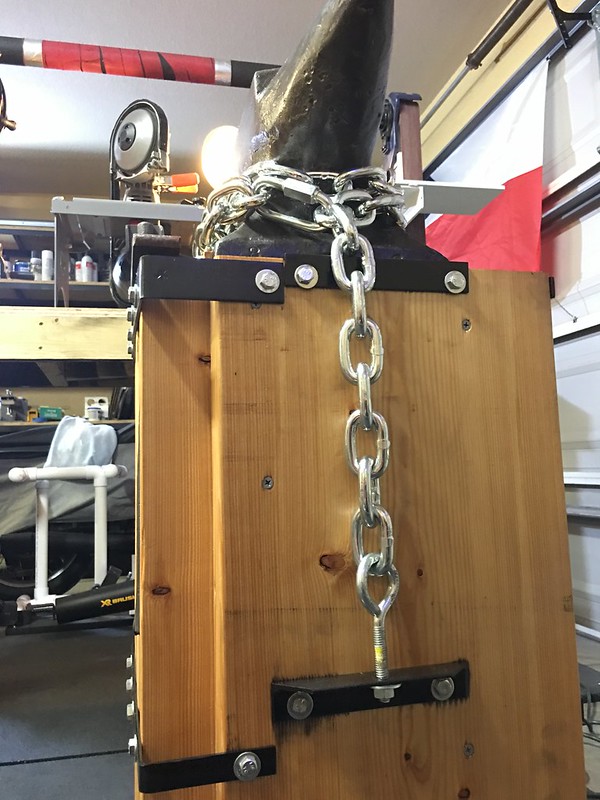I'm gonna be the voice of dissent here. None of these are appropriate, if you want to have remotely efficient forging with an anvil that size.
With a much larger anvil (250-400lbs) that is really necessary for knifemaking, you can overcome the lack of an appropriate stand with the anvil mass, but with a 100lb anvil, which *IS* appropriately sized for most knife work, it's important, to have it mounted correctly.
What is correct? It needs to be an immovable object. If you can push, wobble, beat it around, it's wrong, sorry. Stumps or wood stacks set on top of the ground were *never* used by real smiths. If it was a "stump", you could bet it was burried 4' deep below ground, over what showed above.
You're gonna see real quick, with any of those options, your anvil bouncing around when you forge. This will add massive amounts of work required to move the steel the same amount as it would when properly secured (anything should be bolted down if it's not cemented in to be truly optimal, including the anvil being secured to the stand).
If you MUST have an option that can be moved, I highly recommend fabricating, or having fabricated a tri-pod stand with steel plate, and tubing, as heavy as you feel you can move. However, it would be really beneficial to have it bolted to down to the slab, and have the tubing legs filled with sand and oil. This aids in vibration and sound dampening.
I also, greatly prefer the tri-pod stand to any other type, because it allows you get over the anvil in the correct stance, in a way that no solid stand, that takes up more footprint than the anvil will allow. This adds to forging efficiency and proper technique, but also, really aids in reducing fatigue and back pain over time.
A properly secured, 100lb anvil (that doesn't move, shake, or vibrate visibly, when struck with a heavy blow) will out work a 400lb anvil on a shaky base, any day of the week. Anybody that's ever worked on one, knows this is true, but many will likely disagree, because they don't want to believe it, when they've never experienced it.
99% of all the shops I've been in, have poorly mounted anvils, that bounce all over the place, with smiths that either dream, or already have a power hammer, because they got tired of fighting the steel. I have 3 power hammers at the moment, but I still forge my blades by hand, and can do it nearly as fast, and with more precision, by hand, on a properly mounted anvil, than I can with the hammers, but you couldn't pay me enough to forge a blade by hand on an anvil sitting on a stump, that's not bolted to the floor.
My 2c, though I'm sure it's not what you wanted to hear.

If it absolutely has to be one of your initial options, yes, option B is the best.
